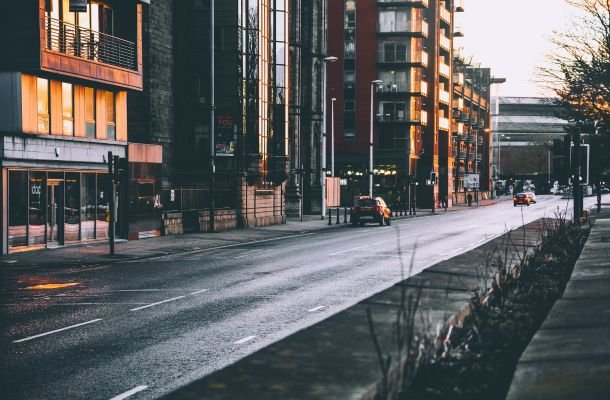Roadways of Albuquerque, New Mexico

Albuquerque, New Mexico, is a city defined by its expansive road network, which plays a critical role in the daily lives of its residents and the functioning of its economy. The roadways in Albuquerque connect neighborhoods, support commerce, and facilitate travel throughout the city and beyond. This comprehensive guide explores the history, development, and current state of Albuquerque’s roadways, including major highways, local streets, public transportation infrastructure, and future transportation projects.
Historical Development of Albuquerque’s Roadways
Early Roads and Trails
Native American and Spanish Influence
- Pre-Colonial Pathways: Before the arrival of European settlers, the area now known as Albuquerque was crisscrossed by trails used by Native American tribes, particularly the Pueblo peoples. These pathways connected various communities along the Rio Grande and served as routes for trade and communication.
- El Camino Real: One of the most significant early roads in the region was El Camino Real de Tierra Adentro, a trade route that connected Mexico City to Santa Fe, passing through what is now Albuquerque. This road was established by Spanish colonists in the late 16th century and was crucial for the movement of goods and people between the Spanish colonies in the north and the capital in Mexico.
Territorial and Early Statehood Roads
- 19th Century Expansion: As Albuquerque grew during the 19th century, especially after becoming part of the United States in 1848, the city saw the development of more structured roadways. These early roads were often dirt paths that followed the natural contours of the land, connecting Albuquerque to nearby settlements and facilitating the movement of settlers, goods, and military forces.
- Railroad Influence: The arrival of the railroad in Albuquerque in 1880 significantly influenced the development of the city’s roadways. The railroad brought an influx of people and commerce, leading to the establishment of new streets and the formalization of existing paths into more permanent roads.
20th Century Roadway Development
The Automobile Era
- Early Automobile Roads: The introduction of the automobile in the early 20th century revolutionized transportation in Albuquerque. Roads that were once designed for horses and wagons were widened and paved to accommodate cars and trucks. The city began to see the development of arterial roads that connected residential areas with commercial and industrial centers.
- Route 66: Perhaps the most iconic roadway development during this time was the alignment of Route 66 through Albuquerque in 1926. This famous highway, known as the “Main Street of America,” brought a surge of tourism and commerce to the city, as travelers passed through on their way across the country. Central Avenue, which served as Albuquerque’s section of Route 66, became a bustling corridor lined with motels, diners, and gas stations.
Post-War Suburban Expansion
- Suburban Growth: After World War II, Albuquerque experienced rapid suburban expansion. New residential neighborhoods were developed on the city’s outskirts, necessitating the construction of new roads and the extension of existing ones. This era saw the rise of the automobile as the dominant mode of transportation, leading to the development of a road network designed to support suburban living.
- Interstate Highway System: The construction of the Interstate Highway System in the 1950s and 1960s further transformed Albuquerque’s roadways. Interstate 25 (I-25) and Interstate 40 (I-40) were built to intersect in Albuquerque, making the city a key transportation hub in the region. These highways facilitated the efficient movement of goods and people, contributing to Albuquerque’s growth as a major city in the Southwest.
Major Highways and Arterial Roads
Interstate Highways
Interstate 25 (I-25)
- Overview: I-25 is a major north-south interstate that runs from Las Cruces, New Mexico, to the Canadian border in Wyoming. In Albuquerque, I-25 is a critical artery that runs through the heart of the city, providing a direct route between the downtown area and the northern and southern suburbs.
- Key Interchanges: Significant interchanges along I-25 in Albuquerque include the Big I (the interchange with I-40), the San Mateo Boulevard exit, and the Paseo del Norte exit. These interchanges are crucial for managing the flow of traffic into and out of different parts of the city.
- Traffic and Congestion: I-25 is one of the busiest highways in Albuquerque, especially during rush hours. The highway is vital for commuters traveling to and from downtown Albuquerque, as well as for long-distance travelers passing through the city.
Interstate 40 (I-40)
- Overview: I-40 is an east-west interstate that spans the entire width of the United States, from Barstow, California, to Wilmington, North Carolina. In Albuquerque, I-40 serves as the primary east-west corridor, connecting the eastern and western parts of the city.
- Route 66 Legacy: Much of I-40 through Albuquerque follows the historic route of Route 66. The highway continues to carry the spirit of this historic route, with many landmarks and attractions located near I-40 exits.
- Significant Interchanges: Important interchanges along I-40 include the Big I (the interchange with I-25), the Coors Boulevard exit, and the Eubank Boulevard exit. These interchanges facilitate the flow of traffic to key commercial and residential areas of the city.
U.S. and State Highways
U.S. Route 550
- Overview: U.S. Route 550 begins in Bernalillo, just north of Albuquerque, and travels northwest toward Farmington, New Mexico, and the Colorado border. While it does not pass directly through Albuquerque, U.S. 550 is an important route for residents traveling to northern New Mexico and southern Colorado.
- Connection to Albuquerque: U.S. 550 is accessible from I-25, making it a convenient route for Albuquerque residents heading toward the Four Corners region.
New Mexico State Road 45 (Coors Boulevard)
- Overview: Coors Boulevard, designated as State Road 45, is a major north-south arterial road on the west side of Albuquerque. It parallels the Rio Grande and serves as a vital corridor for residents in the western part of the city.
- Traffic and Development: Coors Boulevard is a busy commercial corridor, lined with shopping centers, restaurants, and residential developments. It also provides access to several key west-side neighborhoods and is an important route for commuters heading to other parts of the city.
Major Arterial Roads
Central Avenue
- Overview: Central Avenue is one of Albuquerque’s most important and historic roads, running east to west through the heart of the city. It follows the alignment of the historic Route 66 and is lined with many iconic landmarks, businesses, and cultural sites.
- Cultural Significance: Central Avenue is home to many of Albuquerque’s cultural and entertainment districts, including Nob Hill, Downtown, and Old Town. The road is a hub of activity, with numerous restaurants, shops, and theaters.
- Current Developments: In recent years, Central Avenue has seen significant revitalization efforts, including the development of new businesses, public art installations, and the Albuquerque Rapid Transit (ART) project, which provides dedicated bus lanes along the corridor.
Paseo del Norte
- Overview: Paseo del Norte is a major east-west arterial road that serves as a key route for residents of Albuquerque’s northern suburbs. It provides a critical link between the Westside and the Northeast Heights, crossing the Rio Grande via the Paseo del Norte Bridge.
- Traffic and Expansion: Paseo del Norte is one of the busiest roads in Albuquerque, particularly during rush hours. The road has undergone several expansions and improvements in recent years to accommodate growing traffic demands, including the addition of lanes and the construction of new interchanges.
Montgomery Boulevard
- Overview: Montgomery Boulevard is another major east-west arterial road in Albuquerque, running through the Northeast Heights. It connects several residential neighborhoods with commercial areas and provides access to I-25.
- Commercial Corridor: The road is lined with shopping centers, restaurants, and offices, making it a busy commercial corridor. It also serves as a key route for residents traveling between the Northeast Heights and other parts of the city.
Public Transportation Infrastructure
Albuquerque Rapid Transit (ART)
Overview of the ART System
- Introduction to ART: Albuquerque Rapid Transit (ART) is a bus rapid transit system that operates along Central Avenue, providing a fast and efficient public transportation option for residents and visitors. The system was launched in 2017 as part of the city’s efforts to improve public transit and reduce traffic congestion along one of its busiest corridors.
- Dedicated Lanes: ART buses travel in dedicated lanes along Central Avenue, allowing them to avoid traffic congestion and maintain a consistent schedule. The system is designed to provide a high-frequency service with buses arriving every 7 to 15 minutes during peak hours.
ART Stations and Routes
- Station Design: ART stations are located at key points along Central Avenue, with platforms that are elevated to match the level of the buses for easy boarding. The stations feature modern amenities, including digital displays with real-time arrival information, ticket vending machines, and shelters.
- Routes and Connections: The ART system primarily serves Central Avenue but is integrated with other bus routes operated by ABQ RIDE, Albuquerque’s public transit agency. This integration allows passengers to connect to other parts of the city, including the airport, universities, and major employment centers.
ABQ RIDE Bus System
Overview of ABQ RIDE
- Introduction: ABQ RIDE is Albuquerque’s primary public transit system, providing bus service throughout the city and surrounding areas. The system includes a network of regular bus routes, express routes, and park-and-ride services.
- Bus Fleet and Services: ABQ RIDE operates a fleet of buses, including standard buses, articulated buses, and electric buses. The system offers various services, including local routes, express routes that connect outlying areas with the city center, and specialized services for seniors and individuals with disabilities.
Major Bus Routes
- Route 66: Named after the historic highway, Route 66 is one of ABQ RIDE’s most popular routes, running along Central Avenue and serving many of Albuquerque’s key destinations, including Downtown, the University of New Mexico, and Nob Hill.
- Rapid Ride: Rapid Ride is a limited-stop bus service that provides faster travel along major corridors, including Central Avenue (Red Line) and Coors Boulevard (Blue Line). The service is designed to reduce travel times for commuters and improve connectivity between different parts of the city.
Bicycle and Pedestrian Infrastructure
Bike Lanes and Trails
- Overview of Bike Infrastructure: Albuquerque has made significant efforts to improve bicycle infrastructure in recent years, with the development of bike lanes, trails, and shared-use paths. The city’s flat terrain and mild climate make it well-suited for cycling, and these efforts have encouraged more residents to use bicycles for commuting and recreation.
- Major Bike Trails: Some of the most popular bike trails in Albuquerque include the Paseo del Bosque Trail, a 16-mile multi-use path that follows the Rio Grande, and the North Diversion Channel Trail, which provides a direct route from the University of New Mexico to the Northeast Heights.
Pedestrian Infrastructure
- Sidewalks and Crosswalks: Albuquerque has an extensive network of sidewalks and crosswalks, particularly in the downtown area and older neighborhoods. The city has also implemented pedestrian-friendly initiatives, such as the creation of pedestrian plazas and the installation of countdown timers at busy intersections.
- Walkability Initiatives: In recent years, Albuquerque has focused on improving walkability, particularly in areas like Downtown, Nob Hill, and Old Town. These efforts include the creation of wider sidewalks, improved lighting, and the addition of public art and green spaces.
Challenges and Future Developments
Traffic Congestion and Road Maintenance
Congestion Issues
- Rush Hour Traffic: Traffic congestion is a significant issue in Albuquerque, particularly on major highways like I-25 and I-40, as well as arterial roads like Paseo del Norte and Coors Boulevard. Rush hour traffic can lead to delays and increased commute times for residents.
- Infrastructure Strain: The city’s roadways, particularly older roads, are under strain from the increasing number of vehicles. This has led to concerns about the long-term sustainability of Albuquerque’s road network and the need for ongoing maintenance and upgrades.
Road Maintenance Challenges
- Pavement Conditions: Maintaining Albuquerque’s extensive network of roads is an ongoing challenge. Issues like potholes, cracked pavement, and outdated road designs are common, particularly on older streets and in areas with heavy traffic.
- Funding for Repairs: Securing funding for road maintenance and repairs is a constant challenge for the city. While state and federal grants provide some support, much of the funding comes from local sources, which can be limited.
Future Roadway and Transportation Projects
Ongoing and Planned Projects
- Paseo del Norte Improvements: The city has several ongoing projects aimed at improving traffic flow and safety along Paseo del Norte, including the addition of new lanes, the construction of new interchanges, and the installation of traffic management systems.
- Central Avenue Revitalization: Efforts to revitalize Central Avenue continue, with plans to improve pedestrian infrastructure, add new public spaces, and enhance the streetscape with landscaping and public art.
- I-25 Corridor Study: The I-25 Corridor Study is an ongoing project that aims to identify long-term improvements to the highway, including the potential addition of new lanes, improvements to interchanges, and enhancements to traffic management systems.
Future Transportation Initiatives
- Public Transit Expansion: Albuquerque is exploring options to expand its public transit system, including the potential extension of ART to other parts of the city and the development of new bus routes and park-and-ride facilities.
- Bicycle and Pedestrian Enhancements: The city plans to continue investing in bicycle and pedestrian infrastructure, with the goal of making Albuquerque a more bike-friendly and walkable city. Future projects include the expansion of bike lanes, the development of new trails, and improvements to pedestrian crossings.
Conclusion
The roadways of Albuquerque, New Mexico, are more than just a network of streets and highways—they are the lifeblood of the city, shaping its growth, connecting its communities, and supporting its economy. From the historic paths of Native Americans and Spanish colonists to the bustling highways and modern transit systems of today, Albuquerque’s roadways have a rich and complex history. As the city continues to grow and evolve, its road network will remain a critical component of its infrastructure, requiring ongoing investment, innovation, and community engagement to meet the needs of its residents and support a vibrant, connected city.
Find us
Tuesday
Wednesday
Thursday
Friday
Saturday
Sunday
10 am – 10 am
10 am – 10 am
10 am – 10 am
10 am – 10 am
10 am – 10 am
10 am – 10 am









